The Institution of Engineering and Technology was formed in 2006 by the joining together of the IEE (Institution of Electrical Engineers) and the IIE (Institution of Incorporated Engineers). This overview summarises the history of the IET from its foundation in 1871.
Telegraphy: the new technology
Electric telegraphy reached commercial success in Britain when Cooke and Wheatstone applied electric telegraphy to railways. By 1870 over 2000 men and 500 women were employed by the telegraph companies in the UK, predominantly as telegraph operators, but for the men, there was an opportunity to become an engineer. The term "engineer" was barely in use in 1870, but the telegraph engineer had to know about electricity, which set him apart from the civil or the mechanical engineer.
Telegraph engineers had the option of joining one or other of the existing Institutions (The Institution of Civil Engineers was founded in 1818 and the Institution of Mechanical Engineers in 1847) but by 1870, felt that their profession had attained such a standing that its needs were inadequately met by the other bodies.
The Society of Telegraph Engineers
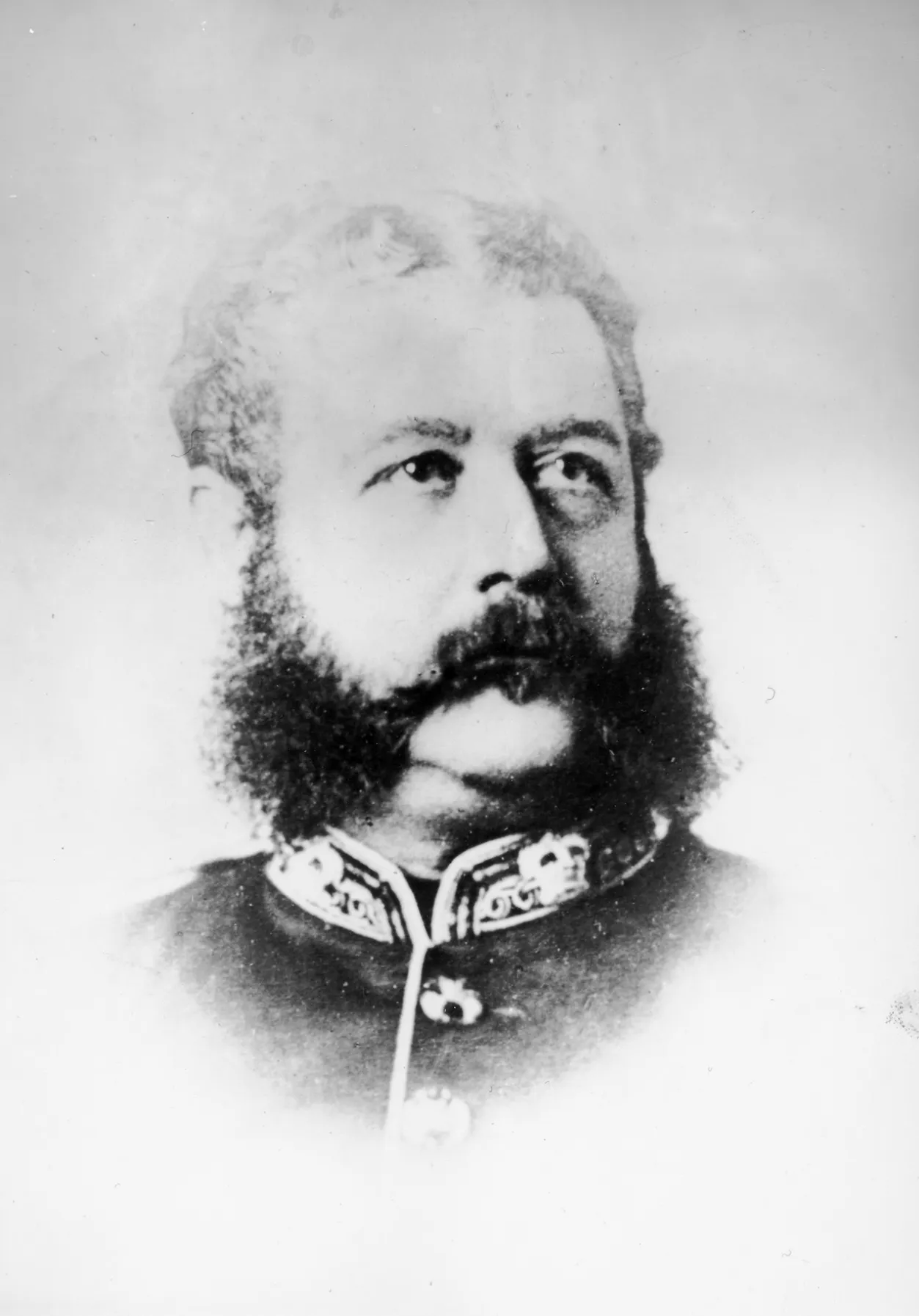
Portrait of Major Frank Bolton
The Society of Telegraph Engineers (STE) formally came into existence on 17 May 1871 at a meeting held in 2 Westminster Chambers, Victoria Street, London.
The prime mover in this endeavour was Major Frank Bolton. He had been made an unattached major as a reward for his services to army signalling in 1868.
At the first meeting Bolton and seven others attended. They appointed a President (Charles William Siemens 1823-1883), two vice-Presidents (Lord Lindsay 1847-1913 and Frank Ives Scudamore 1823-1884), a Council of eleven members, a Treasurer and Librarian, an Honorary Secretary (Frank Bolton) and two Auditors.
The earliest statement of the Society's 'Objects' pronounces that its purpose was for the general advancement of Electrical and Telegraphic Science and for facilitating the exchange of information and ideas among its members.
Qualifications for admission reflected the Society's dual nature as a professional association and a learned society.
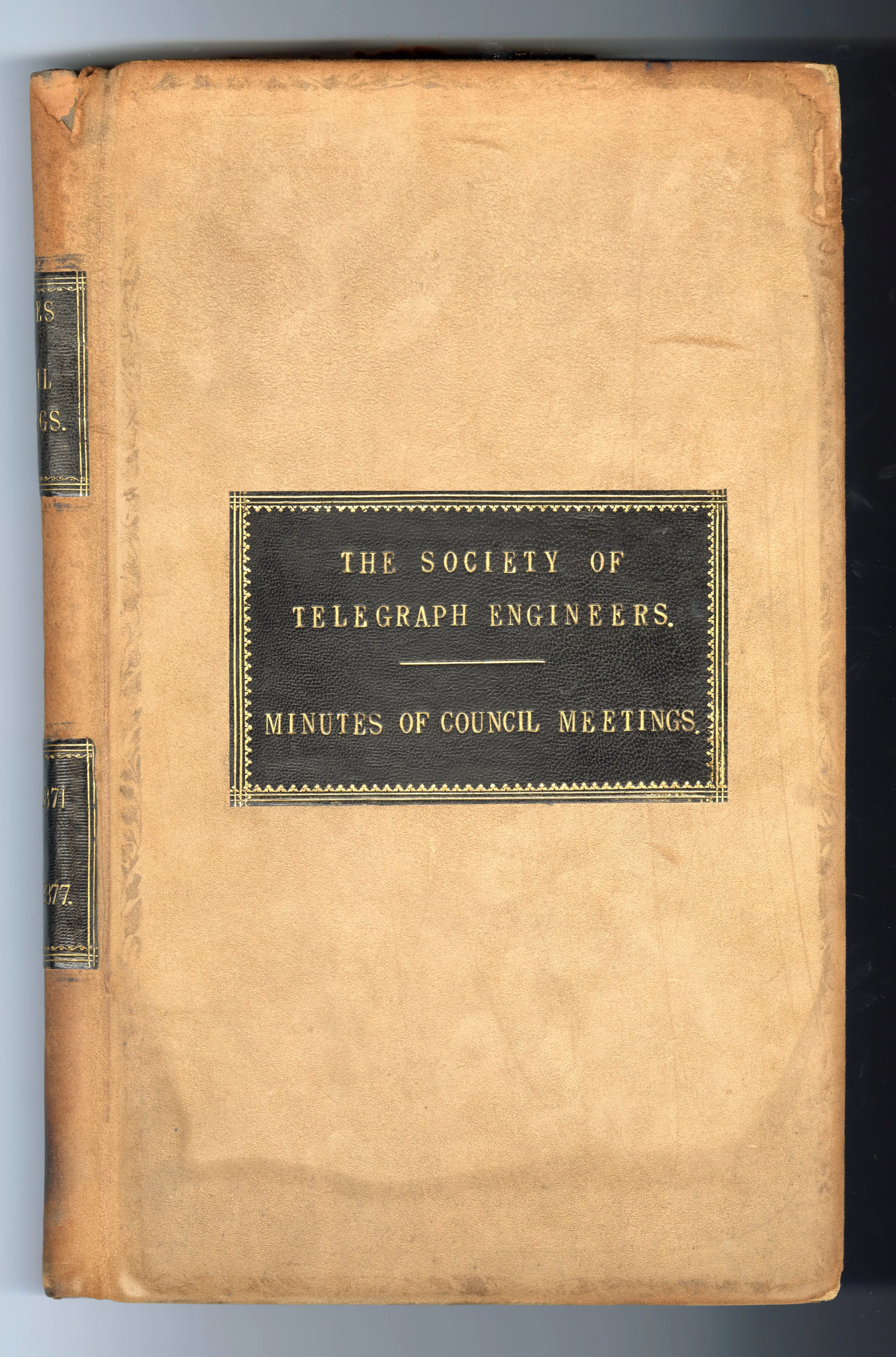
The Society of Telegraph Engineers Council Minute Book 1871-1877
The professional engineer's route to membership required him to have been educated as a Telegraph Engineer and to have been employed in positions of responsibility for at least five years.
An Associate had to be over the age of twenty-one. There were no qualifying examinations until 1913; emphasis was placed instead on experience and positions of responsibility.
In the early days the focus of the Society was on telegraphy alone. However, it was decided that it would need to broaden its scope to include electrical science as this was a concern of every Telegraph Engineer and was not already represented in a separate learned society.
The STE grew from strength to strength mainly because engineers required a Society of their own to reflect and represent their needs in a world where new uses for electricity were being rapidly developed.
The Institution of Electrical Engineers
At the General Meeting of the STE on 22 December 1880 it was decided to alter the title to reflect the changes in electrical technology of the day and was renamed The Society of Telegraph Engineers and of Electricians.
At a meeting of the Council on 10 November 1887 a motion was put forward to alter the name to the Institution of Electrical Engineers to reflect its representation of the body of electrical engineers in England.
On 1 January 1889 the Register of Joint Stock Companies issued his Certificate of Incorporation to the Institution of Electrical Engineers (IEE).
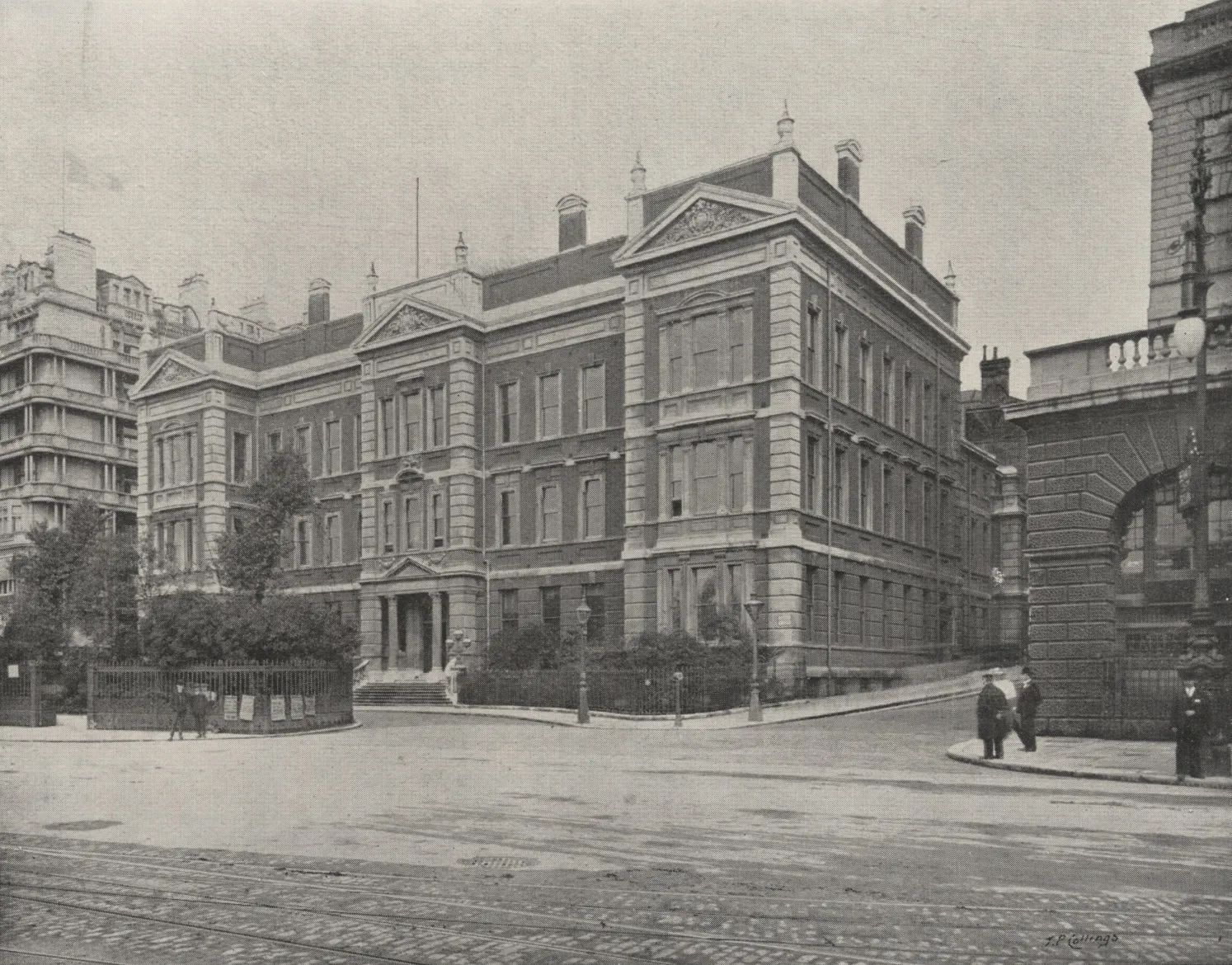
Photograph of Savoy Place 1908
The Institution's membership increased by 170 per cent from 2,064 to 7,045 between the years 1895 and 1914 illustrating the growth of electrical activity. This expansion manifested itself when the Institution took possession of a building of its own on 1 June 1909.
Prior to this, the Institution had relied on the hospitality of other Institutions to hold its meetings. However, with the financial prospects of the Institution improving they were able to buy the remaining seventy-six years of a ninety-nine-year lease, granted by the Duchy of Lancaster to the Royal College of Physicians and the Royal College of Surgeons of England, for a sum of £50,000.
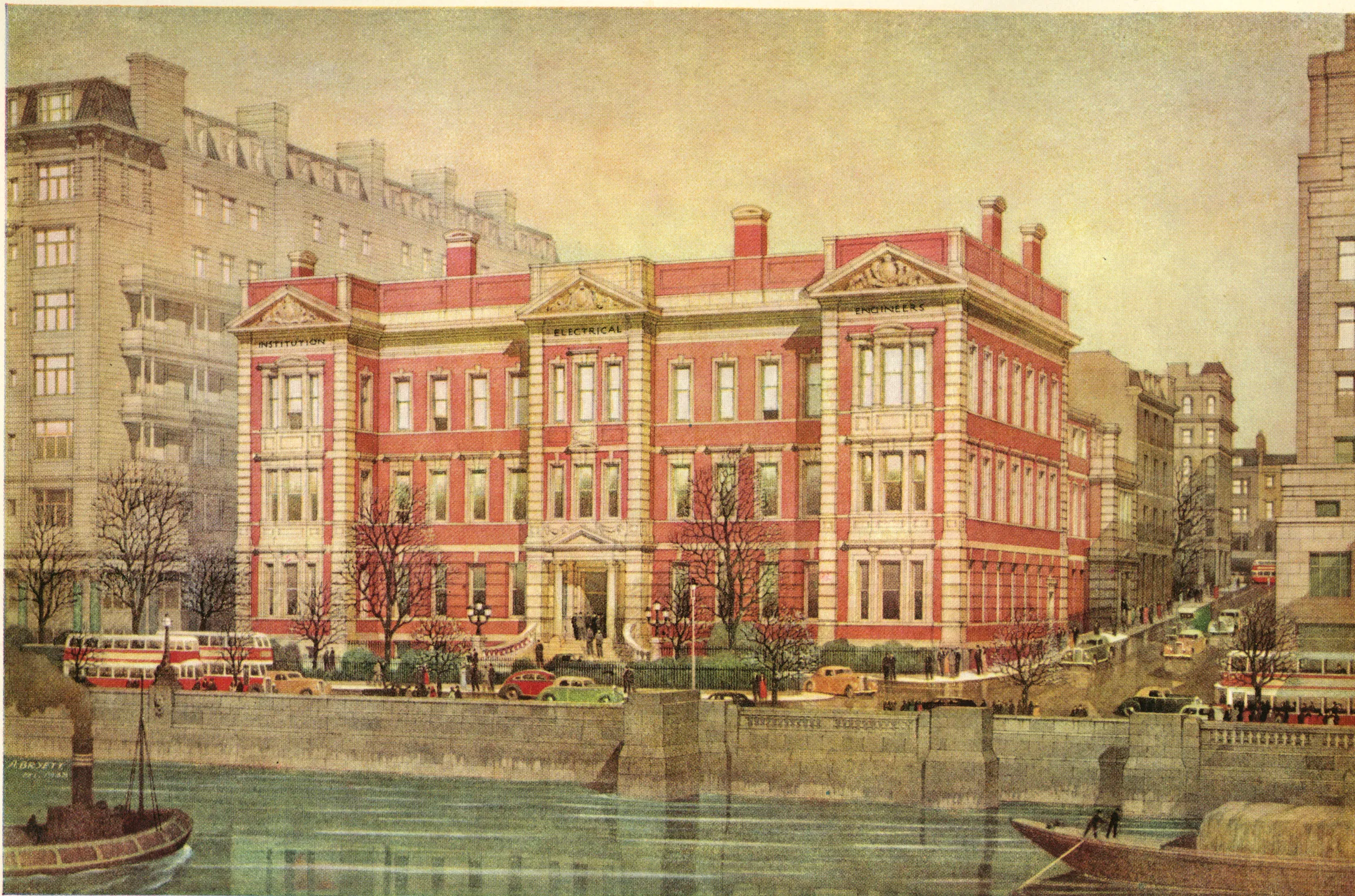
Painting of Savoy Place by A Bryett, 1939
The site is what is now Savoy Place, built in the 1880s. Members held their first Ordinary General Meeting there on 10 November 1910.
More information about the building can be read in a history of The Savoy and IET London: Savoy Place.
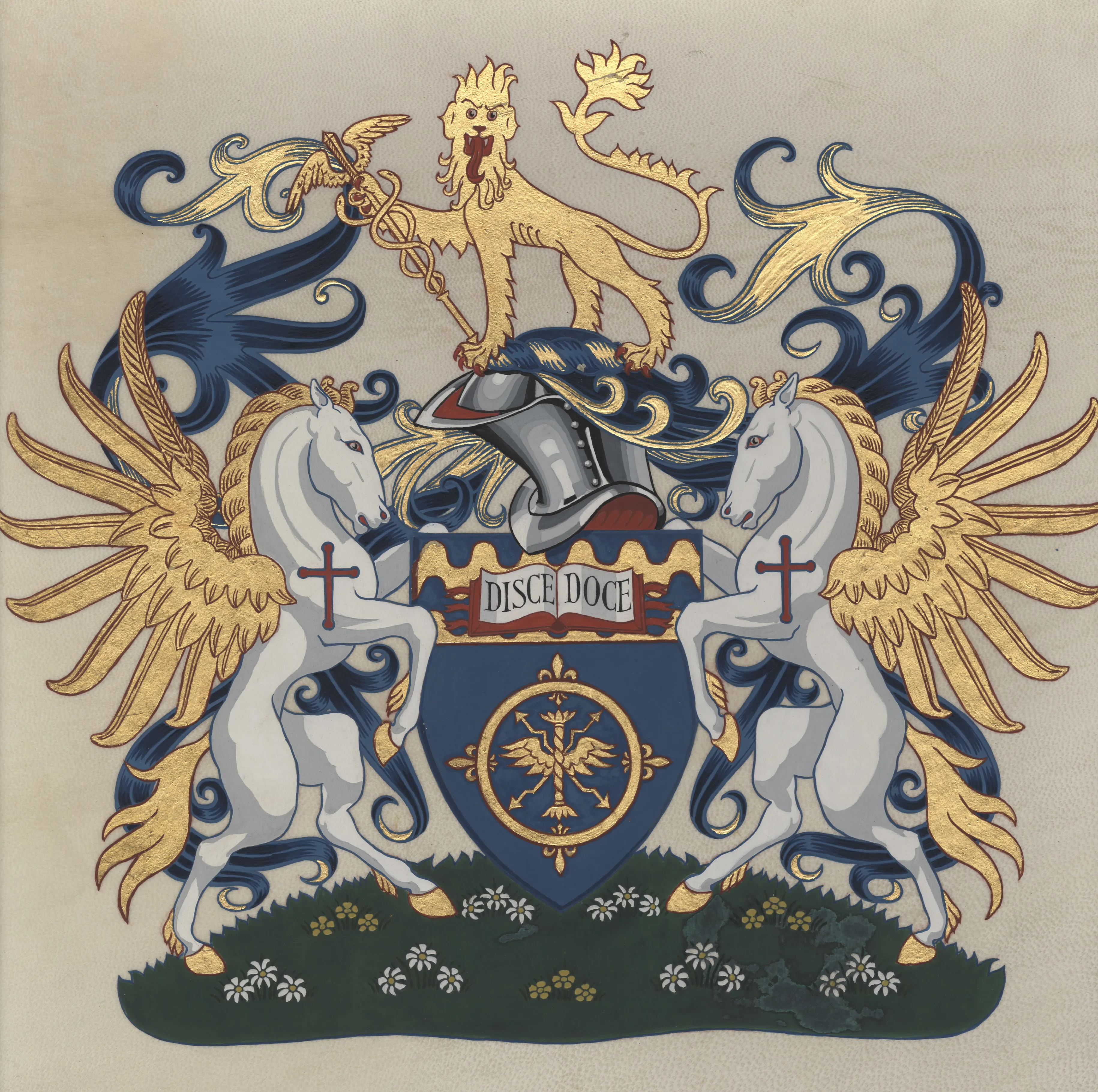
IEE Coat of Arms, granted 1948
The Charter, granted in August 1921, defined the 'objects and purposes' of the IEE in traditional terms: 'to promote the general advancement of Electrical Science and Engineering and their applications and to facilitate the exchange of information and ideas on those subjects among members...' Importantly, Clause 14 established the members' exclusive right to put appropriate initials after their name, especially MIEE and AMIEE, to indicate their professional qualifications.
In 1924 the IEE obtained from the Privy Council the right for corporate members to describe themselves as Chartered Electrical Engineers. The grant of the charter, fifty years after the foundation of the Society of Telegraph Engineers, confirmed its position as an organisation representing a learned profession and extending its influence in the direction of members' education, qualifications and public standing. The IEE was granted a coat of arms in 1948. It was registered as a charity in 1963.
A family of many organisations
The IET is made up from over forty predecessor organisations that can trace their history as far back as 1854 with the Society of Engineers (SoE). The Society of Engineers was established in May 1854 in The Strand, London, it was the third oldest professional engineering body in the UK. It promoted the interests of members worldwide and was concerned with all branches of engineering. In 2005 the SoE was absorbed into the Institution of Incorporated Engineers (IIE) and then later in 2006 the IIE merged with the Institution of Electrical Engineers (IEE) to form the IET (Institution of Engineering and Technology) and now has over 157,000 engineering and technology professionals in 148 countries.
To see all the predecessor institutions of the IET see the PDF family tree below:
Publications
The IET is prolific in its publishing dating back to its early days as the STE. In 1882 the first edition of the Wiring Regulations: Rules and Regulations for the Prevention of Fire Risks arising from Electric Lighting was published. The regulations were later extended to all aspects of electric wiring, including factories and ships.
By the mid-1960s members could also subscribe to Proceedings. Students were catered for in the Student's Quarterly Journal.
The Institution also published other works including periodicals, conference reports and careers booklets. In January 1964 the IEE News appeared which was a monthly house newsletter devoted to the Institution's work. Separate to the Institution's publications services but run in partnership with the Physical Society and then later with the Institute of Physics and the American Institute of Electrical Engineers was Science Abstracts.
After the First World War, the crisis in technical education in Britain led to the Institution accrediting technical courses at colleges and universities. By 1930, Graduate members were required to have a recognised qualification or to have passed the IEE examination. This led to the Institution accrediting a wide range of degree courses.
Information taken from two of the IEE's official histories by Rollo Appleyard (1939) and W. J. Reader (1987) both can be found in our library online catalogue.
The Archives of the Institution of Engineering and Technology
The IET has kept records of its own activities as well as the development of electrical engineering and technological innovation with records dating back to the 14th century.
The institutional records include Council and Committee minutes from the 1870s to the present day, constitutional records, membership records, correspondence, photographs, films, medals and portraits. They are an excellent source of information on the history of the IET, the growth of electrical engineering and the history of past presidents and notable members.
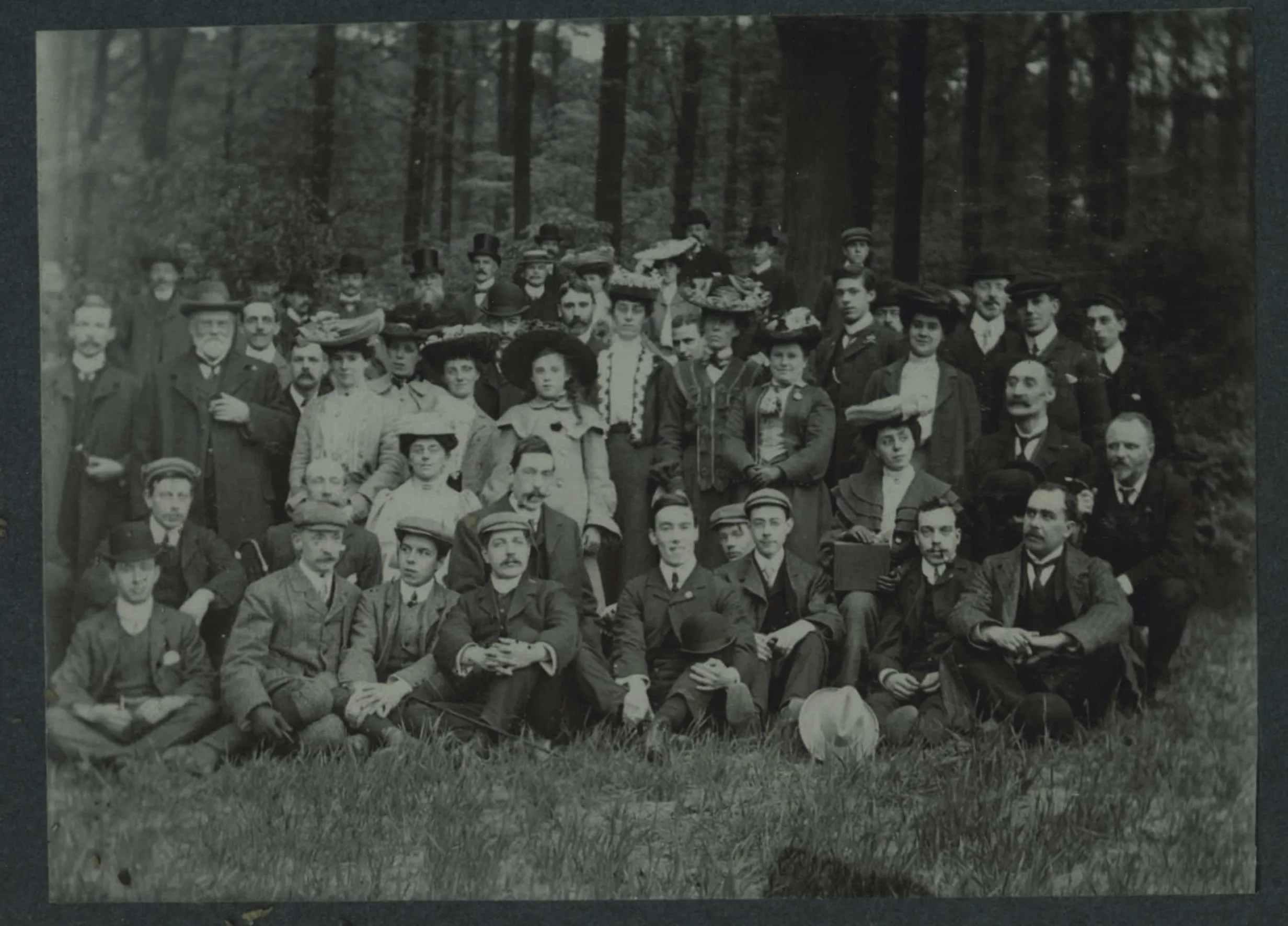
Photograph of The Junior Institution of Engineers visit to Glory Woods, Dorking, 1903-1909
If you would like to find out more about our past presidents, honorary fellows and recipients of our medals please refer to the Past Presidents section of the site.
The IET Archives also holds the records of the Institution of Electronic and Radio Engineers (IERE) and the Institution of Production Engineers (IProdE, later the IMfgE), with which the Institution merged in 1988 and 1991 respectively. The Archives also recently acquired the records from the IIE that include some material from the Junior Institution of Engineers.
We welcome enquiries about the collections and viewing of the archives. To make an appointment please see the contact and location information for the IET Archives.
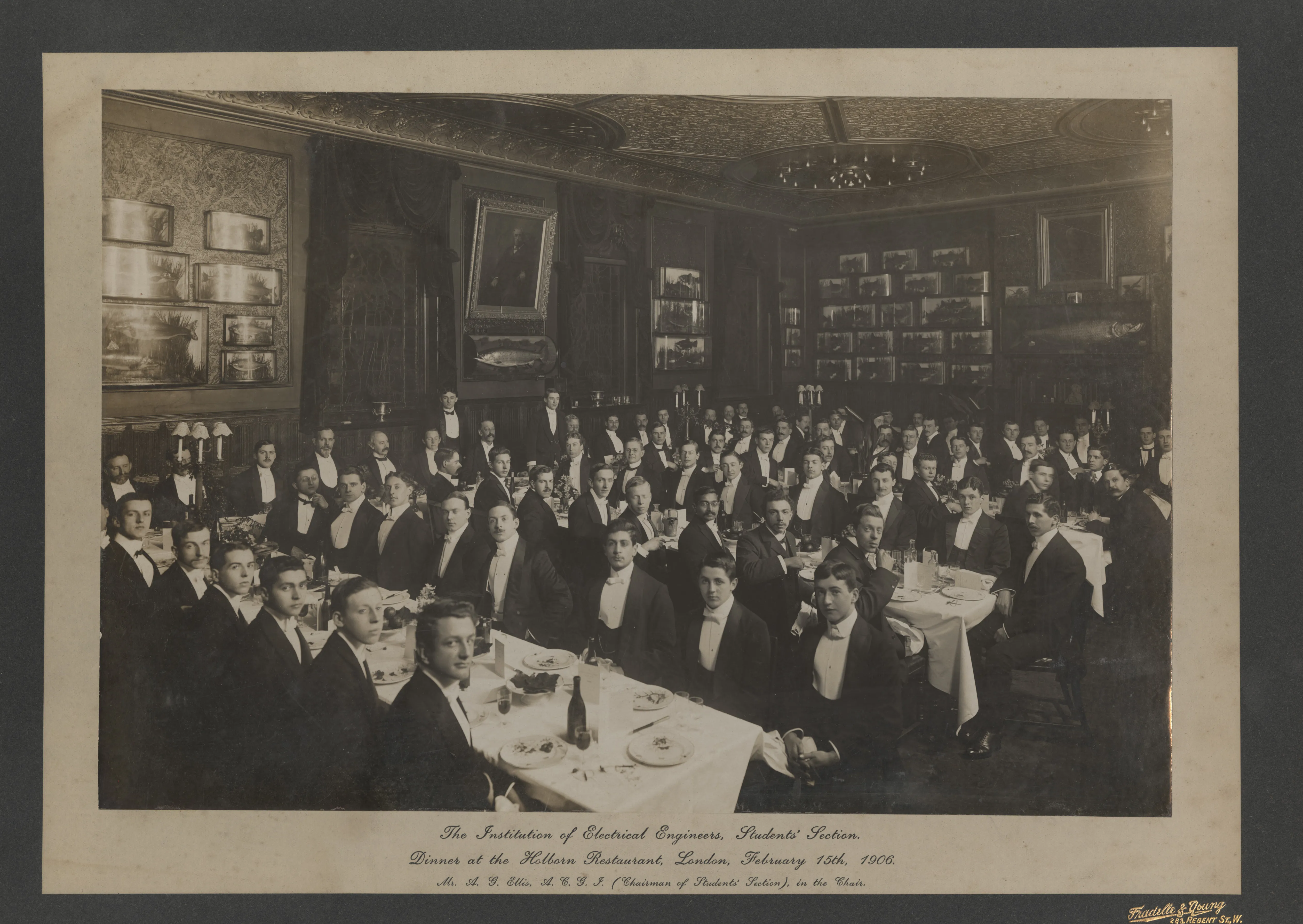
IEE Student Section annual dinner 1906
